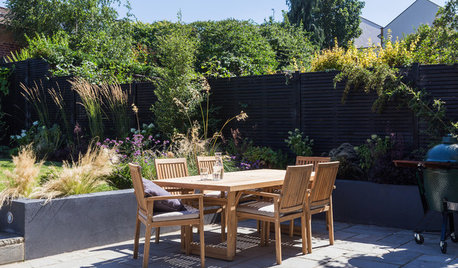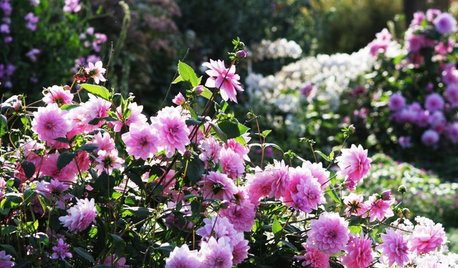Caladiums spadix NOT forming pollen..!!!
I wanted to try my hand on pollinating Caladiums, I planted the following varieties:
Candidum
Fannie Munson
White Queen
Mrs. Arno Nehlring
They all sprouted and grew vigorously, pics as follows:
{{gwi:381628}}
{{gwi:381629}}
Candidum was the one first to sent the inflorescence:
{{gwi:386085}}
but the next day after opening of blade of spathe, i observed that the spadix has turned brown and dry with no pollen at all..!! i assumed that it was due to very hot and dry weather, so I covered the other inflorescence of White Queen with a plastic bag to maintain humidity around the bloom, today in the morning i noticed the same thing... NO POLLEN..... the spadix is not dry but it has become brown, very similar to the first spadix....
What I am doing wrong???? how the situation can be improved?
Another question I wanted to ask is that as you can observe in the pics that my Caladiums are loosing their bright contrasting colors, Candidum and Finnie Munson started with good coloration but are becoming greener as the new growth appears, while White Queen and Mrs. Arno Nehlring are completely green with some dull pink spots and dull red ribs.... what is causing this problem?? will they remain in same dull coloration forever?
The plants receive filtered sunlight for about 3 hours in morning, afterward its bright shade all day...
Any advices??
Izhar
Comments (10)
izharhaq
Original Author13 years agohere are some recent pics, as on 09-06-2010 (morning 6:30 am)
{{gwi:386087}}
{{gwi:386089}}
{{gwi:386091}}
Now the inflorescence :{{gwi:386093}}
{{gwi:386096}}
Izhar
exoticrainforest
13 years agoThere could be several reasons. One is the plants are likely tissue cultured and may have yet to outgrow all the chemicals used in the "stew" they were created in. Although the inflorescences look good they may still be malformed due to the process of tissue culture. Eventually they should out grow this. A possible solution is to buy tubers from another grower that has grown naturally in the ground.
Caladiums are like Philodendron in they are unisexual and have imperfect flowers containing only one sex. The female flowers develop first but they are hidden inside the "globe" at the base of the inflorescence. On the first day the inflorescence opens the female flowers develop hidden inside this female floral chamber. These are fertile for only a single day. The next day the male flowers develop on the upper portion of the spadix and should produce pollen, which appears like a fluffy "fungus". In between the two, and still inside the female floral chamber can be found the sterile male flowers that produce the pheromones used to attract natural insect pollinators. The female flowers are receptive for a short period of time and the male flowers produce pollen for a limited period of time before the inflorescence collapses. If the female flowers are pollinated the female floral chamber will remain on the peduncle that supports the inflorescence and the berries and seeds will develop inside.
In order to pollinate this species you must first collect the pollen once it appears and unless you have many inflorescences still developing and can use it right away put it into a sealed vial that also has desiccant in it to prevent the pollen from being destroyed by moisture.
When you realize a new inflorescence is beginning to open mix the pollen with sterile water to create a thick mixture known as a slurry. Use an eyedropper to drip it into the female floral chamber. Before doing so place a piece of tape over the overlapping edges of the chamber to prevent it from dripping out too quickly. After about 15 minutes remove the tape and if you are lucky the female flowers may have been pollinated.
My friend Julius Boos wrote a great article a few years ago explaining how both bisexual and unisexual inflorescences develop. You may want to read his article, which is illustrated before attempting to pollinate again.
If there is simply no pollen being developed there is likely a reason that is causing this natural part of aroid reproduction to not occur. Without seeing the plants that may be difficult to determine but aroid pollination expert LariAnn Garner who often frequents this site may have a better answer.
The link below is where you can read Julius article.
SteveHere is a link that might be useful: Aroid pollination
Related Professionals
Essex Landscape Architects & Landscape Designers · Rancho Cordova Landscape Architects & Landscape Designers · Canyon Lake Landscape Contractors · Fairhope Landscape Contractors · Firestone Landscape Contractors · Sugar Hill Landscape Contractors · Oxon Hill Landscape Contractors · Three Lakes General Contractors · Miami Gardens General Contractors · Norwell General Contractors · Roseburg General Contractors · Summit General Contractors · Avocado Heights General Contractors · East Brunswick Siding & Exteriors · Johns Creek Siding & Exteriorslariann
13 years agoI also want to address the coloration issue; it is natural for the newer leaves to show more green than the first few leaves do. In my experience, the first flush of leaves is usually the most colorful. Also, the amount of light they get makes a big difference. More shade will usually result in more green showing up. I have some Caladiums planted where they get some direct sun, and they are pretty colorful even with later season leaves.
About the Caladium pollen; although I do store pollen occasionally over silica gel, I do not recommend this type of storage for Caladium or Philodendron pollen. The reason is that these two produce moist pollen on strings and it is moist for a reason. I prefer to use fresh pollen with these two and I have not been successful in storing moist pollen such as these two genera produce.
You should read my article about Caladium hybridization, but I cannot post the link to it here due to GardenWeb forum restrictions. However, if you do a Google search for "Caladium hybridization", the link to my article is the fifth listed (the first two are mine, too, but are to my research website, not the article).
LariAnn
Aroidia Researchexoticrainforest
13 years agoI was unaware of the wet pollen not being able to be stored with silica LariAnn. Thanks very much for the update and the additional info regarding the humidity.
Steve
izharhaq
Original Author13 years agoIt is really such a nice feeling to have detailed comments from experts. Thank You so much Mr. Steve and Madam LariAnn.. :)
Dear Mr. Steve, I have read this very article as well as much of the website as well... excellent effort i must say..!!
Respected Madam LariAnn, I have also read the your article on the other website, as well as the success story of Johan at Barbados (he is my friends at F.Book also).
The time when these two inflorescence opened its was raining for 24 hours and also as you can observe in the pics that I had covered one bloom with a plastic bag so the moisture content surrounding them was quiet good and also it also protected the newly developed pollen to be eaten by any insect e.t.c. I am familiar with the pollen produced by Zantedeschia albomaculata and Syngonium spp. as they produce pollen in abundance, but the Caladiums proved that they are more challenging.
I have one tuber of Thai Caladium NOID (but similar to Ma Had Thai) it has just started to sprout and as it has two spikes from a single node, i presume as on with a inflorescence spike, I have also started building a small green house in which i will keep my Aglaonemas, Anthuriums and the Thai Caladium.
Does this issue i.e. absence of Pollen has some thing to do with soil nutrients? as I had tilled in up to 12-14 inches in the bed with composted manure prior to planting the tubers as well as very lightly sprinkling of some general purpose 20-20-20 fertilizer, I have read that they are not heavy feeders.
Mr. Steve, the point you raised in about tissue cultured plants, if this is the case then will it improve in the next growing cycle of plants?
The Caladiums do not usually go dormant in our region and they easily tolerate our fall season unless they are short of water.
Madam LariAnn, is this true that some varieties of Caladiums produce more pollen or are more hardy than the others?
I would like to thank again both of you for your replies, its really encouraging for a beginner.
Regards,
Izhar
lariann
13 years agoDifferent Caladiums do produce differing amounts of pollen, and I have observed one or two that produced almost no pollen. Nutrition is definitely a factor' however, your plants look quite healthy so in your case I don't believe that lack of nutrition is your problem.
They also differ in their hardiness, especially when comparing the Thai hybrids with the Western hybrids. Thai hybrids are much less tolerant of cold weather, and they also form much smaller tubers. While the most vividly colored varieties are in demand, the hardier and stronger ones will have some green. Without it, they cannot store enough food to make it through the dormant season.
LariAnn
izharhaq
Original Author13 years agoUPDATE: The last inflorescence which opened on Thursday evening has started producing pollen, the spadix is still cream colored unlike the earlier ones which became brown quickly. The bloom is on the variety Mrs. Arno Nehlring.
Unfortunately there is no other unopened inflorescence to pollinate.
Izhar
exoticrainforest
13 years agoExcellent news Izhar. In time tissue cultured plants should outgrow any deformities caused by excess chemical used during their production. I have seen large plants with malformed spadices that begin to produce a normal inflorescence in a year or two. It is just up to Mother Nature how long it takes the plant to heal itself.
As LariAnn said, your plants look great and I am delighted you have seen pollen. It is always fun to see the process complete itself and begin to grow new plants from the fruit and seeds that develop.
Good growing!
Steve








lariann